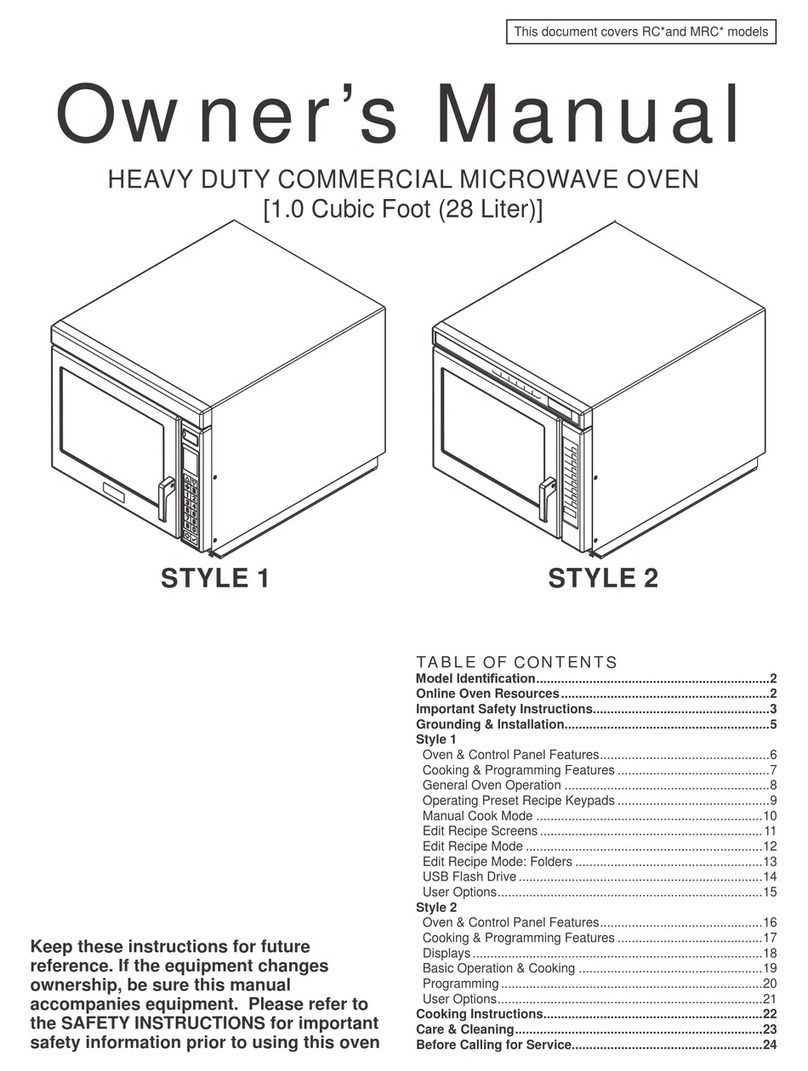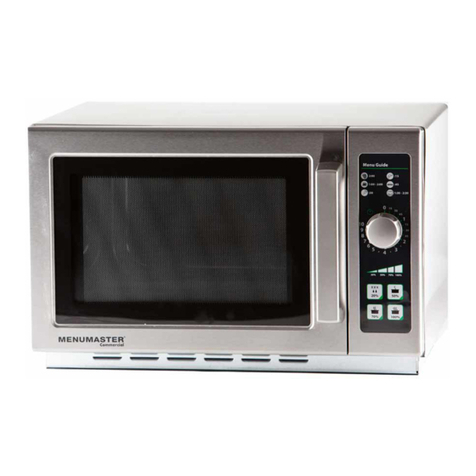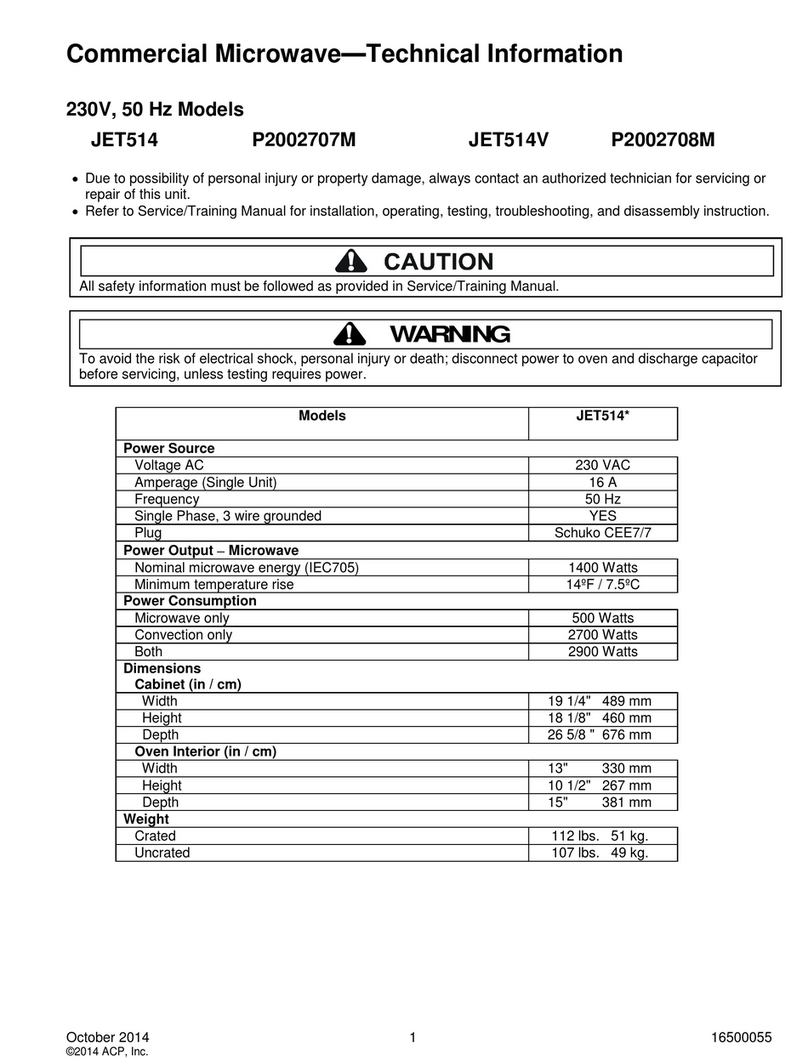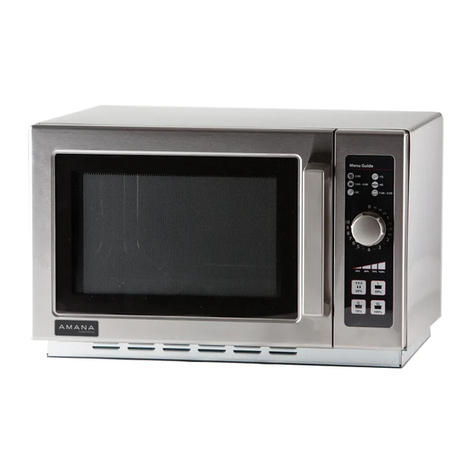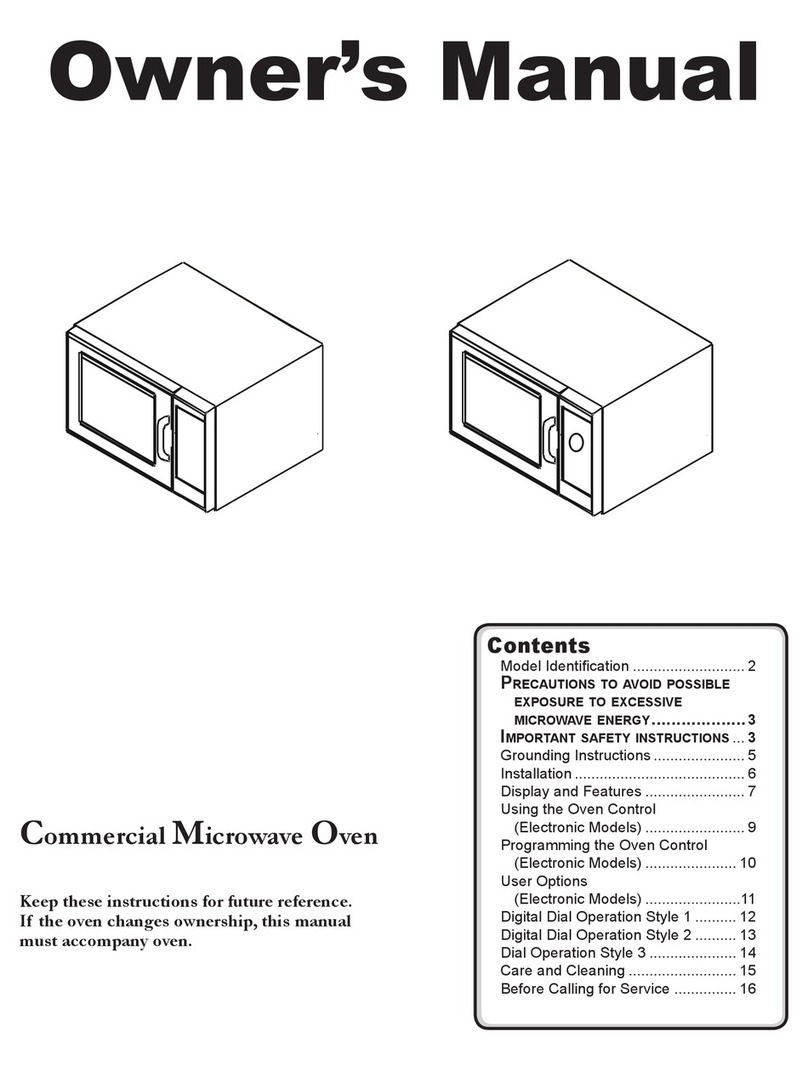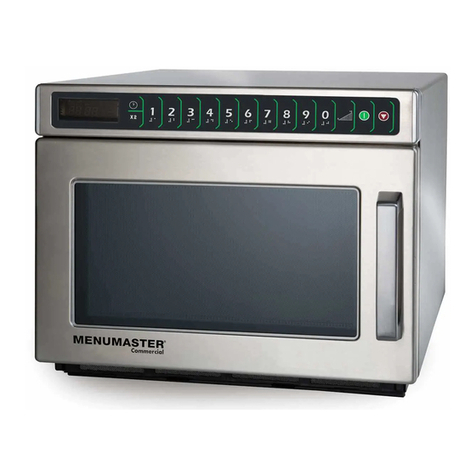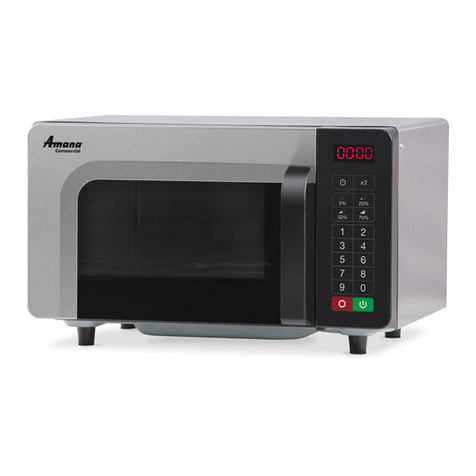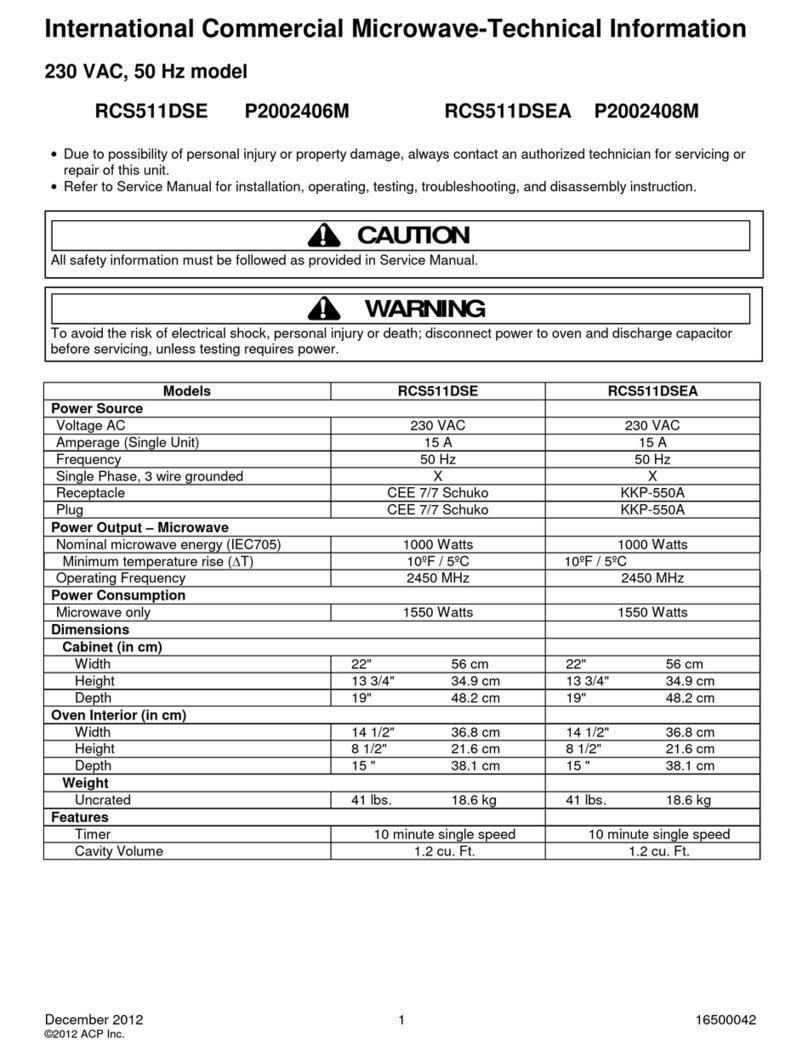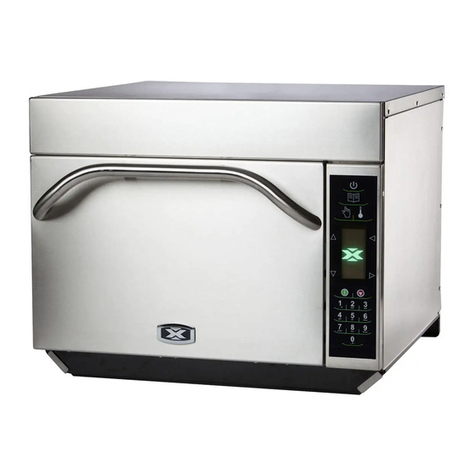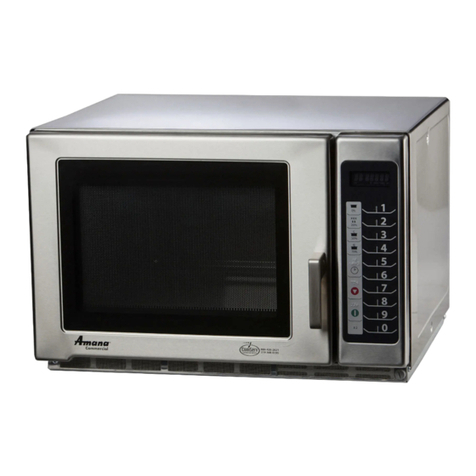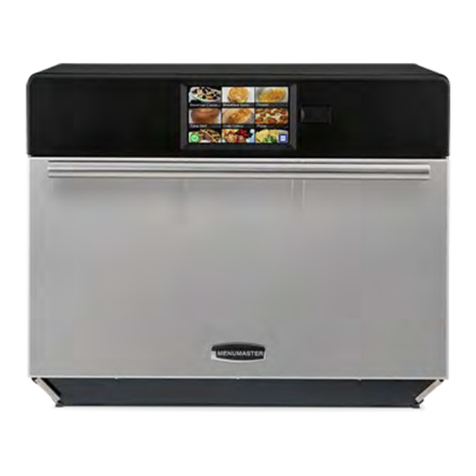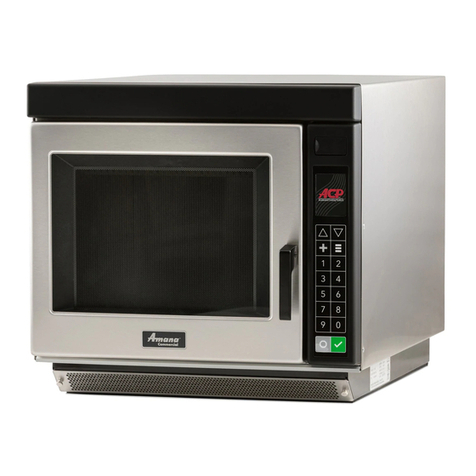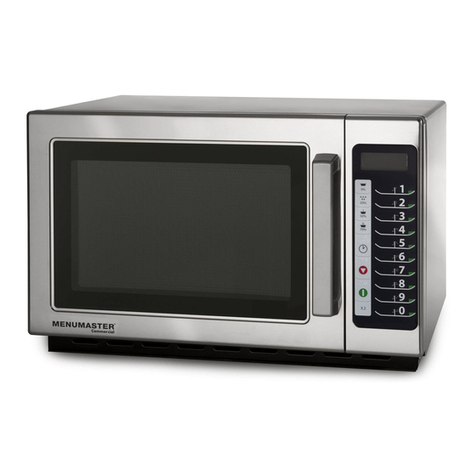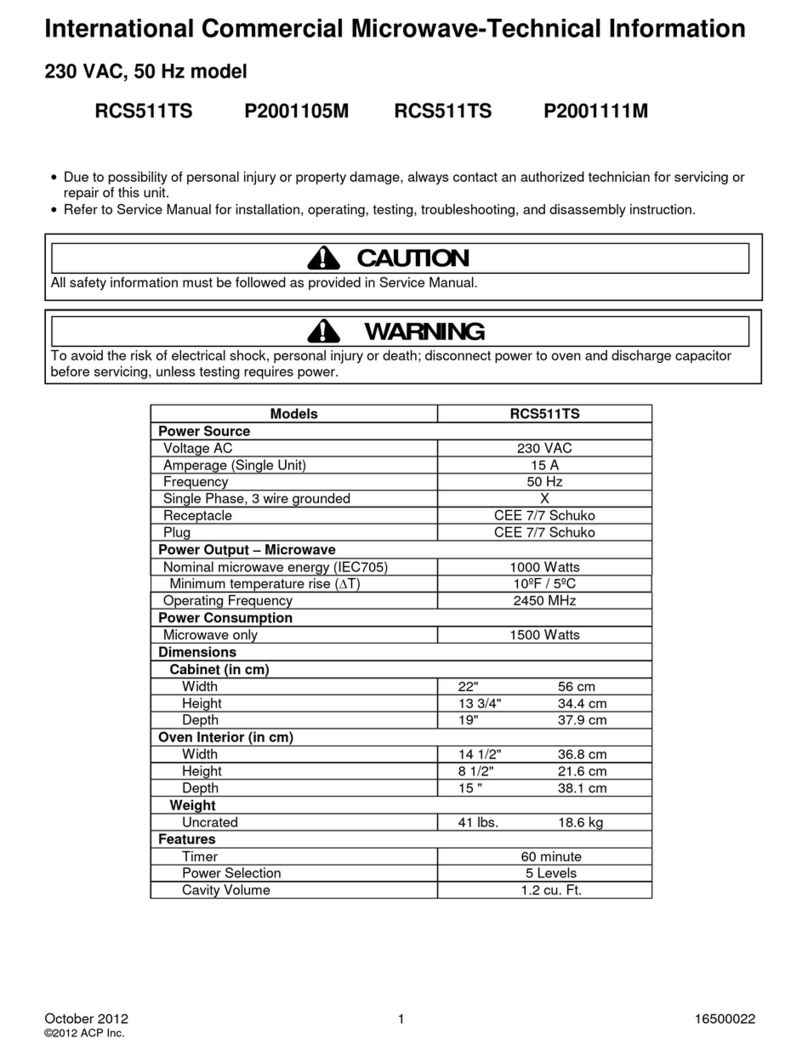Important Safety Information
!
WARNING
Read the following information to avoid possible exposure to microwave radiation:
The basic design of the Microwave Oven makes it an inherently safe device to both use and service.
However,therearesomeprecautionswhichshouldbefollowedwhenservicingthemicrowavetomaintainthis
safety. These are asfollows:
1.
Always operate the unit from an adequately
groundedoutlet. Donotoperateonatwo-wire
extensioncord.
2.
Beforeservicingtheunit(ifunitisoperable)perform
themicrowaveleakagetest.
3.
Theovenshouldneverbeoperatedifthedoordoes
notfitproperlyagainsttheseal,thehingesorhinge
bearings are damaged or broken; the choke is
damaged, (pieces missing, etc.); or any other
visible damage can be noted. Check the choke
areatoensurethatthisareaiscleanandfreeofall
foreignmatter.
4.
If the oven operates with the door open and
producesmicrowaveenergy,takethefollowing
steps:
A.
Telltheusernottooperatetheoven.
B.
ContactACPComServimmediately.
5.
Alwayshavetheovendisconnectedwhentheouter
case is removed except when making the "live"
tests called for in the Service Manual. Do not
reach into the equipment area while the unit is
energized. Makeallconnectionsforthetestand
checkthemfortightnessbeforepluggingthecord
into theoutlet.
6.
Alwaysgroundthecapacitorsonthemagnetron
filter box with an insulated-handle screwdriver
before working in the high voltage area of the
equipmentcompartment. Sometypesoffailures
will leave a charge in these capacitors and the
dischargecouldcauseareflexactionwhichcould
makeyouinjure yourself.
7.
Always remember that in the area of the
transformer there is HIGH VOLTAGE. When the
unitisoperatingkeepthisareaclearandfreeof
anythingwhichcouldpossiblycauseanarcor
ground,etc.
8.
Do not for any reason defeat the interlock
switchesthereisnotvalidreasonforthisaction
atanytime;norwillitbecondonedbyACP.
9.
IMPORTANT: Before returning a unit to a
customer,besuretocheckforproperswitch
interlockaction.
10.
The MicrowaveOvenshouldneverbe
operatedwithanycomponentsremovedand/or
bypassedorwhenanyofthesafetyinterlocksare
found to be defective, or when any of the seal
surfacesaredefective,missing,ordamaged.
11.
All microwaveovensmeetallrequirements
oftheradiationcontrolforHealthandSafetyActof
1968. Due to measurement uncertainties, the
maximumleakageforthefieldwillbe4mw/cm2.
12.
Toensure that the unit does not emit excessive
microwaveleakageandtomeettheDepartment
ofHealthandHumanServicesguidelines,check
theovenformicrowaveleakageusingamicrowave
oven leakage meter that complies with US
GovernmentCDRH/FDA/DHHSrequirements
andoranyotherlocalgovernmentrequirements.
The maximum leakage level allowed by ACP
is 4mw/cm 2.
13.
Ifservicerencountersanemissionreadingover
4mw/cm2,theserviceristoceaserepairand
contact the ACP ComServ Department
immediatelyforfurtherdirection. ACP
will contact the proper Government
Agencyuponverificationofthetestresults.

